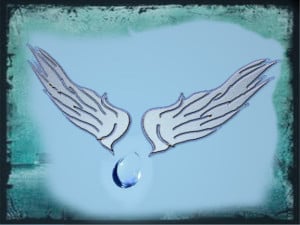
Sitting next to the Mausoleum, the “Angel of Grief” might be the lesser known of the two Stanford landmarks, yet the image of an angel hunched over in tears is hard to forget. The statue is even more memorable for its meaning: It serves as an emblem of Jane Stanford’s grief over the loss of her brother Henry Lathrop, who lived with her after Leland Stanford Sr. died. Lathrop is buried beneath the statue.
“At the time that she [had the statue built], there was a bigger cemetery in the arboretum,” said University Archaeologist Laura Jones. “The University faculty, staff and employees were also buried [there].”
Before she died, Jane Stanford had the cemetery in the arboretum moved to its present-day location on Arastradero Road.
“She didn’t want the arboretum to be just a cemetery,” Jones said. “There were more and more graves, and she was concerned that it was going to take over the entire arboretum.”
Still, the angel stayed, even though it is not the original statue Jane Stanford commissioned in 1901. The first one was damaged in the 1906 San Francisco earthquake, and Charles Lathrop, another one of Jane’s brothers, arranged to have a replacement brought from Italy.
“The original angel had a marble cupola over the top of it,” Jones said. “That’s what fell in 1906.”
Small marble tiles also surrounded the entire original statue.
Since its replacement, the University has made a strong effort to preserve the “Angel of Grief.” In 1996, the original small marble tiles surrounding the statue were replaced with plants in a restoration project.
Although it sits in a secluded part of the arboretum, the angel is not immune to vandalism. The University once had to repair the angel’s arm after someone carved it off.
“[The statue is] over-scaled slightly. If she stood up, she would have been over seven feet tall,” Jones said. “We scaled it back slightly, and the Cantor Arts Center curators reviewed it as well. This hand is slightly smaller than the other hand. If it was [made] to scale, it would have looked monstrous.”
Jane Stanford’s grief and love for her brother Henry, although captured in the statue itself, can best be seen in a letter she wrote to Charles following Henry’s death. In particular, she included words of instruction to ensure careful preparation for the statue.
“Dear brother, do not have any of these marbles unpacked until I get home,” she wrote in a letter written before the statue was erected. “Have them carefully put in a safe, dry place.”
Nowadays, the Angel is used as a more universal memorial site for locals to mourn the loss of their loved ones.
Still, the monument retains both its historic charm and initial significance as Jane Stanford’s tribute to the premature death of a beloved sibling, much in the same way that the Farm itself stands as a memorial to her deceased son and the University’s namesake, Leland Stanford Jr.
— Stephanie Wang